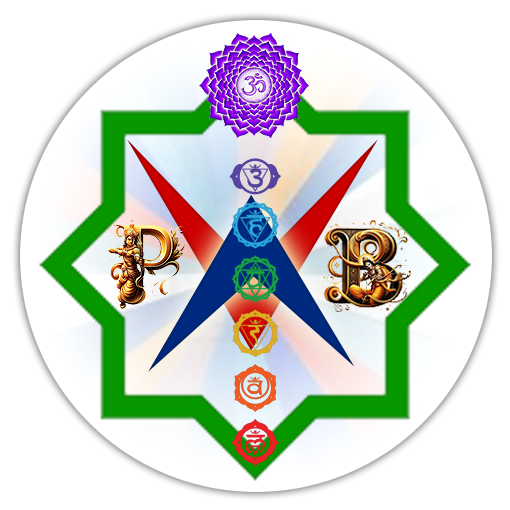కపిల గీత - 313 / Kapila Gita - 313
- Prasad Bharadwaj
- Feb 26, 2024
- 3 min read

🌹. కపిల గీత - 313 / Kapila Gita - 313 🌹
🍀. కపిల దేవహూతి సంవాదం 🍀
✍️. ప్రసాద్ భరధ్వాజ
🌴 7. మానవజన్మను పొందే జీవుని గతిని వర్ణించుట - 44 🌴
44. జీవో హ్యస్యానుగో దేహో భూతేంద్రియ మనోమయః|
తన్నిరోధోఽస్య మరణ మావిర్భావస్తు సంభవః॥
తాత్పర్యము : జీవుని ఉపాధిరూపమైన లింగశరీరము మోక్షము లభించనంత వరకు అతని తోడనే యుండును. దేహము, ఇంద్రియములు, మనస్సులతో గూడిన కార్యరూపమగు స్థూలశరీరము ఈ జీవునకు భోగానుభవములకు ఆధారము. ఈ స్థూల, సూక్ష్మదేహములు పరస్పరము సంఘటితము గాకుండుటయే మృత్యువు అనబడును. ఈ స్థూల, సూక్ష్మదేహములు రెండును ఒకటిగా ప్రకటితమగుటనే జన్మ అని యందురు.
వ్యాఖ్య : ప్రాచీన కాలం నుండి, జీవుడు వివిధ జీవజాతులలో మరియు వివిధ గ్రహాలలో దాదాపు శాశ్వతంగా ప్రయాణిస్తున్నాడు. ఈ ప్రక్రియ భగవద్గీతలో వివరించబడింది. బ్రహ్మాయాన్ సర్వ భూతాని యంత్రరూఢాని మాయయా : ( భగవద్గీత 18-61 ) మాయ యొక్క బంధనముతో, ప్రతి ఒక్కరూ భౌతిక శక్తి అందించే శరీర వాహనంపై విశ్వమంతా తిరుగుతున్నారు. భౌతిక జీవితం అనేది చర్యలు మరియు ప్రతిచర్యల శ్రేణిని కలిగి ఉంటుంది. ఇది చర్యలు మరియు ప్రతిచర్యల యొక్క సుదీర్ఘ చలనచిత్రం, మరియు అటువంటి ప్రతిచర్య ప్రదర్శనలో ఒక జీవితకాలం కేవలం క్షణికం మాత్రమే. ఒక బిడ్డ జన్మించినప్పుడు, అతని నిర్దిష్ట రకమైన శరీరం మరొక రకమైన కార్యకలాపాలకు నాంది అని అర్థం చేసుకోవాలి మరియు ఒక వృద్ధుడు చనిపోయాక, ఒక ప్రతిచర్యాత్మక కార్యకలాపాల గుంపు ముగిసిపోయిందని అర్థం చేసుకోవాలి.
ఒక నిర్దిష్ట రకమైన కార్యాచరణ కోసం జీవికి నిర్దిష్ట శరీరం ఇవ్వబడిందని స్పష్టమవుతుంది. గుర్తించడం సాధ్యం కాని సమయం నుండి ఈ ప్రక్రియ నిరంతరం కొనసాగుతోంది. వైష్ణవ కవులు ఇలా అంటారు, కాబట్టి, అనాది కర్మఫలే, అంటే ఒకరి కార్యకలాపాల యొక్క ఈ చర్యలు మరియు ప్రతిచర్యలు గుర్తించబడవు, ఎందుకంటే అవి బ్రహ్మ జన్మ యొక్క చివరి సహస్రాబ్ది నుండి తదుపరి సహస్రాబ్ది వరకు కూడా కొనసాగవచ్చు. నారద ముని జీవితంలో మనం ఈ ఉదాహరణ చూసాం. ఒక సహస్రాబ్దిలో దాసి కొడుకుగా ఉండి, మరుసటి సహస్రాబ్దిలో గొప్ప జ్ఞాని అయ్యాడు.
సశేషం..
🌹 🌹 🌹 🌹 🌹
🌹 Kapila Gita - 313 🌹
🍀 Conversation of Kapila and Devahuti 🍀
📚 Prasad Bharadwaj
🌴 7. Lord Kapila's Instructions on the Movements of the Living Entities - 44 🌴
44. jīvo hy asyānugo deho bhūtendriya-mano-mayaḥ
tan-nirodho 'sya maraṇam āvirbhāvas tu sambhavaḥ
MEANING : In this way the living entity gets a suitable body with a material mind and senses, according to his fruitive activities. When the reaction of his particular activity comes to an end, that end is called death, and when a particular type of reaction begins, that beginning is called birth.
PURPORT : From time immemorial, the living entity travels in the different species of life and the different planets, almost perpetually. This process is explained in Bhagavad-gītā. Bhrāmayan sarva-bhūtāni yantrārūḍhāni māyayā: (BG 18.61) under the spell of māyā, everyone is wandering throughout the universe on the carriage of the body offered by the material energy. Materialistic life involves a series of actions and reactions. It is a long film spool of actions and reactions, and one life-span is just a flash in such a reactionary show. When a child is born, it is to be understood that his particular type of body is the beginning of another set of activities, and when an old man dies, it is to be understood that one set of reactionary activities is finished.
It is clear that a particular body is given to the living entity for a particular type of activity. This process is going on perpetually, from a time which is impossible to trace out. Vaiṣṇava poets say, therefore, anādi karama-phale, which means that these actions and reactions of one's activity cannot be traced, for they may even continue from the last millennium of Brahmā's birth to the next millennium. We have seen the example in the life of Nārada Muni. In one millennium he was the son of a maidservant, and in the next millennium he became a great sage.
Continues...
🌹 🌹 🌹 🌹 🌹




Comments